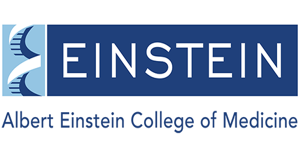Speaker Profile
Biography
Dr. Nir Barzilai is a preeminent leader in geroscience, demonstrating in his studies that aginghas its own biology that drives age-related diseases, a process that can be targeted. At AlbertEinstein College of Medicine, he is a professor in the departments of Medicine and Genetics,the director of the Institute for Aging Research, and the director of the Einstein-NationalInstitutes of Health (NIH) Nathan Shock Center of Excellence in the Basic Biology of Aging, andthe author of 350 papers. He made seminal discoveries in extending the health and lifespan ofanimals and discovering pathways for exceptional longevity in humans. He is leading aninternational effort to approve drugs targeting aging. Targeting Aging with Metformin (TAME) isa specific study conceived by Dr. Barzilai to prove that a single drug can combat multiplediseases associated with aging and get FDA approval for targeting aging. Dr. Barzilai is a co-founder and the President of AHLS. He is also on the board of directors of the AmericanFederation for Aging Research, where he co-leads its biomarker effort (FAST), TAME, andSuper Agers initiative. He is an Executive of the Longevity Biotech Association (LBA) andserves on the Healthy Longevity Medicine Society council. He authored Age Later: Health Span,Life Span, and the New Science of Longevity.
Session Abstract – PMWC 2026 Silicon Valley
Track Chair:
Michael Goldman, SFSU
PMWC Award Ceremony
• David Sinclair, Harvard
• Steve Horvath, UCLA
• Nir Barzilai, Albert Einstein College of Medicine
AI-Driven Biomarkers to Quantify Aging
• Chair: Alex Zhavoronkov, Insilico Medicine
• Luigi Ferrucci, NIH
• Sara Hägg, Karolinska Institutet
• Steve Horvath, UCLA
Epigenetic Aging Signatures in Large Human Cohorts
• Varun Dwaraka, Trudiagnostic
AI Systems for Personalized Longevity: How Biomarkers Translate into Actionable Interventions
• Sherry Zhang, Buck Institute
• Nathan Price, THORNE
• Ranjan Sinha, digbi Health
Epigenetic Rejuvenation & Delivery for Clinical Translation
• Ryan (Yuancheng) Lu, Whitehead Institute/MIT
• David Sinclair, Harvard
Clinical Trial Design & Functional Endpoints for Healthspan
• Nir Barzilai, Albert Einstein College of Medicine
Precision Aging & Longevity: Limited Lifespan Evidence, Vanishing Blue Zones, and Payer ROI
• S. Jay Olshansky, University of Illinois
• Michael Gurven, UC Santa Barbara











